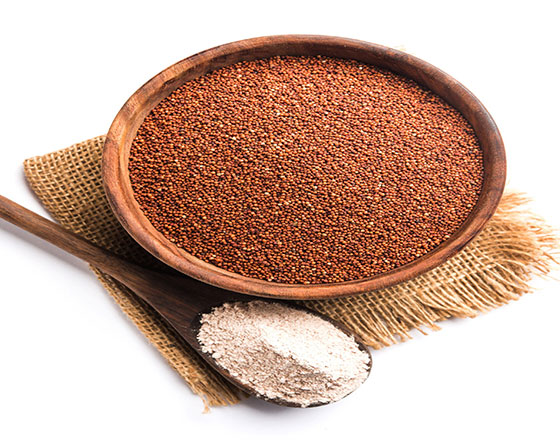Sorghum Millets (Jowar): (H.S Code 100790)

Sorghum is globally known as the "new quinoa" for its gluten-free and whole-grain goodness. It goes by the name of Sorghum in English. In India, Sorghum is a staple food item. It has many words in different states, namely, Cholam in Tamil Nadu and Jonna in Andhra Pradesh. Sorghum is ground into flour that is used to make Rotis, bhakri, cheela, dosa, etc.
Since it is a member of the millet family, Sorghum is gaining massive attention these days. It is an ancient grain whose popularity was shadowed by wheat and rice. The revival of Sorghum is due to the shift in people's mindset about consuming millets. From weight loss to improved heart health, Sorghum has a range of health benefits.
Our company has created a niche in the field of offering Sorghum. The most Sorghum offered by us, is available at reasonable prices for the clients. So feel free to contact us.
Pearl Millets (Bajra): (H.S Code 100829)

Pearl Millet, commonly known as bajra is a profoundly nutritious and easy to digest cereal grain. Being non-glutinous makes it a healthy option for people with a gluten allergy and celiac disease. They are power-packed with carbohydrates, essential amino acids, antioxidants, multiple vitamins like thiamine, riboflavin, folic acid, niacin, beta carotene, and minerals like iron, phosphorus, magnesium, and zinc.
Pearl millets or Bajra can be found in various forms for daily consumption. You can use it as flour to make flatbreads or dosa, grains to make porridge, processed grains as poha or upma for breakfast, and ready to eat snacks like millet or multigrain cookies. The enormous health benefits of bajra make it a perfect superfood, optimum for regular consumption by all.
Ragi (Nachni) : (H.S Code 11029090)

Ragi, scientifically called Eleusine coracana, is an annually cultivated cereal crop, vastly found in the tropical regions of Africa and Asia, such as in Ethiopia, India And Sri Lanka. Being densely packed with a host of nutrients, ragi confers valuable health benefits such as enhancing digestion, reducing the risk of heart disease, slowing down ageing and managing diabetes.
The common English name of Ragi is finger millet, owing to the appearance of the head of the grain comprising five spikes and thus, resembling the five fingers attached to the palm of the hand. This variety of annual grass grows up to a height of 1 to 2 m, belonging to the Gramineae botanical family. Leaves measure between 30 and 70 cm, being narrow and green. The straight or sometimes curved branches hold seeds arranged in florets, which can be brown, red or purple in colour. Widely distributed across several states in India, its local names include “Ragi” in Kannada, Hindi and Telugu, “Nachni” in Marathi, “Madua” in Bengali and “Kezhvaragu” in Tamil.
